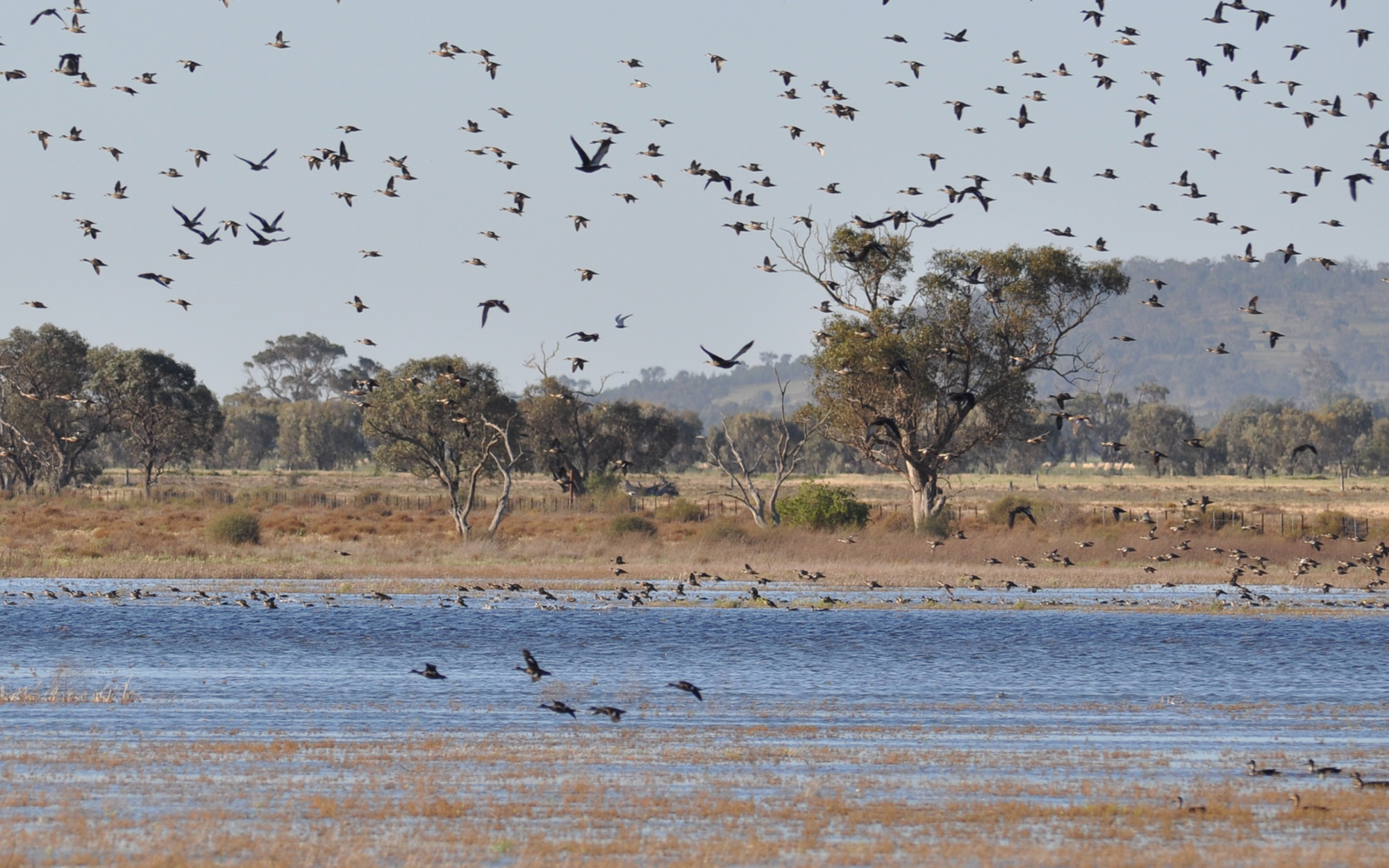What is water for the environment?
Environmental water, or ‘water for the environment’ as it is commonly referred to, is surface or groundwater that is managed specifically to improve the health of rivers, wetlands, floodplains and other water-dependent ecosystems.
‘Environmental water’ is defined in section 8 of the Water Management Act 2000 and includes planned environmental water and licensed environmental water.
Water for the environment is critical to protecting, enhancing and restoring water-dependent ecosystems in NSW
Water for the environment is typically referred to as either ‘planned environmental water’ or ‘held environmental water’.
Planned environmental water
Planned environmental water (PEW) is water committed for ecosystem health or other environmental purposes through rules in surface and groundwater sharing plans.
Planned environmental water is also known as rules-based environmental water and can be ‘discretionary’ or ‘non-discretionary’. Discretionary planned environmental water can be ordered by environmental water managers, while non-discretionary is scheduled for delivery or protection in accordance with the rules set out in the water sharing plan.
Examples of planned environmental water include:
- Water remaining in the water source after water-sharing – each surface and groundwater sharing plan includes a long-term average annual extraction limit (LTAAEL) to ensure a portion of the resource remains in the water source for environmental purposes and other downstream uses.
- Environmental water allowances – several surface water sharing plans set aside water in storages that can be used at the discretion of environmental water managers for specific environmental purposes, such as for suppressing blue-green algae, reducing salinity and supporting bird breeding or fish spawning events (see the Planned environmental water dashboard for environmental water allowance accounts)
- End-of-system flows – some regulated river systems require releases of water from storages to maintain a specific flow rate at the end of the system.
Held environmental water
Held environmental water (HEW) is water allocated to a water access licence held for environmental purposes. Held environmental water is a commonly used term for ‘licensed environmental water’.
Held environmental water licence types
Held environmental water can be classified as statutory and non-statutory.
Statutory held environmental water is defined in section 8(b) of the Water Management Act 2000:
- water (licensed environmental water) that is:
- committed by an adaptive environmental water condition
- taken or permitted to be taken under a licence of an environmental subcategory; or
- taken or permitted to be taken under a licence of a class prescribed by the regulations for the purposes of this paragraph.
Currently there are no licences held under environmental subcategories or classes, so the only statutory held environmental water is for licences with an environmental water condition on the licence.
Non-statutory held environmental water has a non-statutory environmental purpose through an agreement between the department and the licence holder.
Who holds environmental water licences?
Both NSW and Commonwealth governments hold water licences for environmental purposes in regulated, unregulated and groundwater sources. These licences are held within the same licence categories as all other water access licences (e.g., high security, general security and supplementary) and are subject to the same operating rules.
These licences are used to achieve environmental benefits by providing water for specific environmental events. On occasion, environmental benefits are achieved by trading held environmental water as opposed to ordering it.
See the Held environmental water register for data on past and current held environmental water licences and entitlements.
